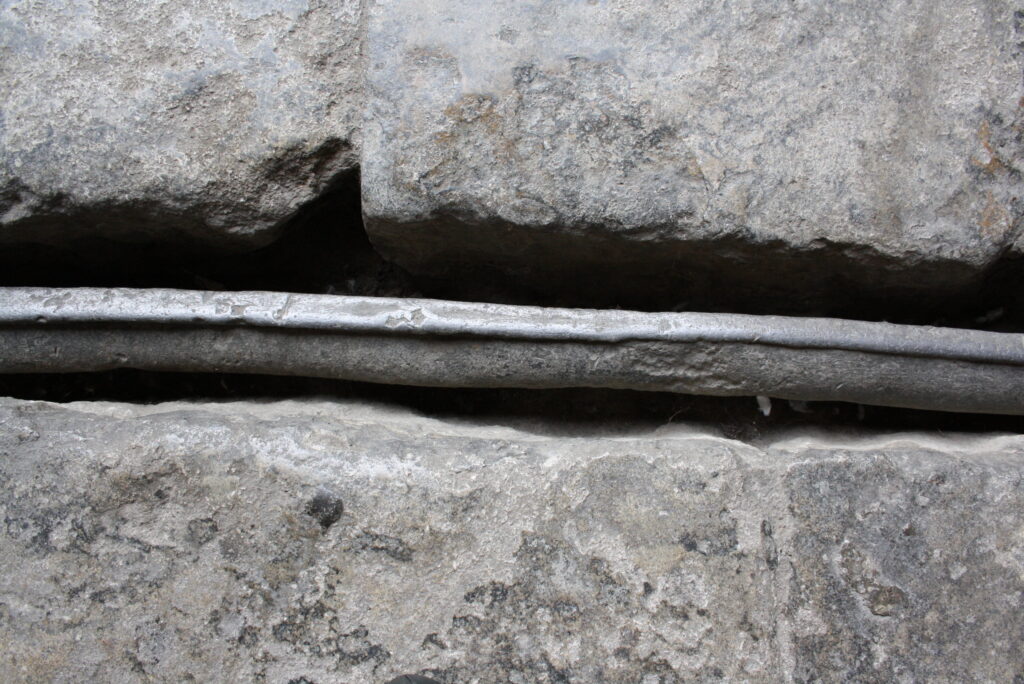A lead pipe (Photo by Louise Devitt via Flickr | CC-SA 2.0).
Montana will receive nearly $25 million to replace lead pipes in water systems within 10 years, the U.S. Environmental Protection Agency recently announced.
The announcement last week said a new rule from the Biden-Harris administration will require more rigorous testing of drinking water and a lower threshold for communities to act on lead in drinking water.
Lead is a neurotoxin, and there is no safe level of exposure, especially for children, the EPA said.
A leader in the medical community praised the funds for Montana, and a spokesperson for the Montana Department of Environmental Quality said an assessment of the amount of lead pipes in the state is underway.
“Currently, the amount of lead piping that exists in Montana is unknown,” said Madison McGeffers, with the DEQ, in an email.
However, McGeffers said the DEQ is collecting lead service line inventories with an Oct. 16 deadline: “We will have a better understanding of the prevalence of lead pipes after the inventories have been reviewed.”
The DEQ said lead service lines have not been required to be replaced in the past, although some water systems have voluntarily removed lead lines.
If a school has a lead service line, the water system that supplies the school would be eligible for EPA funding to remove the school’s line, according to the DEQ. However, schools can also access funds through Montana’s House Bill 5, which dedicated money for removing lead in schools in 2023.
In a phone interview, Dr. Patricia Notario of Billings said young children in the developmental stages of being oral are one of the big worries. They explore their environment by putting things in their mouths.
As such, they are at risk of ingesting chipped paint or lead from fishing tackle or ammunition, she said, and if parents or neighbors fish or hunt, they might pass lead from their hands to a child’s hand — which will go into their mouth.
“As a developing child, you’re susceptible to the neurological damage that can happen from lead,” Notario said.
The development of the brain is most critical at ages 0 to 3, but the brain continues to develop well beyond that period, said Notario, vice president of the Montana Chapter of the American Academy of Pediatrics.
“It can still have effects even on an older child,” Notario said.
The DEQ noted exposure can cause damage to the brain, red blood cells and kidneys, and it can cause reduced IQ, hearing impairment, reduced attention span, and poor classroom performance.
The EPA said exposure can irreversibly damage the brain of a child, but it said it’s harmful to adults, too: “Lead can cause increased blood pressure, heart disease, decreased kidney function and cancer.”
Notario said pediatricians are advised to screen children for lead exposure by ages 1 and 2, when they are most likely to be putting things in their mouths, and pregnant women are advised to be screened if they have a suspected exposure.
She lauded the money for Montana and said dollars will help on at least a couple of fronts: “That’s where this money is the most critical is to help not only with awareness and testing, but to make long-term change so that exposure no longer exists.”
Montana has already worked to address lead in schools.
In the 2023 legislative session, lawmakers dedicated $3.7 million for addressing lead in schools through a reimbursement program included in House Bill 5.
“We have received reimbursement applications for roughly $100,000 to date,” McGeffers said in an email. “A number of schools are planning on submitting additional requests.”
A February 2023 report from the Environment America Research and Policy Center found that most states fall short when it comes to oversight of lead in schools.
It gave Montana a C grade after an analysis determined 75% of water tests at schools had lead.
In an email, the DEQ said the statistic remains current and means 75% of schools had at least one fixture above Montana’s “action level” for lead in schools, which is 5 micrograms per liter or parts per billion.
In the news release from the EPA about the federal funds, the agency said lower income communities and communities of color have a disproportionate lead exposure. It said 49% of the money must be provided to disadvantaged communities as grant funding or principal forgiveness that does not have to be repaid.
“EPA continues to deliver water investments that are eliminating health risks across all communities, including those most affected by aging infrastructure,” said EPA Regional Administrator KC Becker in a statement. “This historic funding will ensure our water providers have what they need to identify and replace lead pipes so everyone in Montana can access safe drinking water.”

